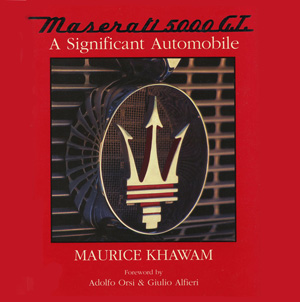
Maserati 5000 G.T.
A Significant Automobile
MAK Group, Publisher, 2001
4132 Lomina Avenue, Lakewood, CA 90713
ISBN 0-9715215-5-7
Order via Telephone 562-429-7151 or email MAKGRP@aol.com
$100.00 USD
Review by Pete Vack
Photos from the book and courtesy the Author
Maurice Khawam’s book dedicated to the Maserati 5000 GT is much like the car itself; powerful, at times elegant, at times mundane, richly conceived, sometimes plainly executed, yet desirable and definitely designed for a particular clientele.
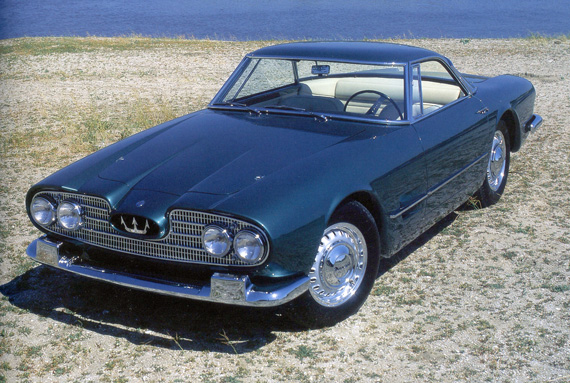
The Shah's car and the one that started the line. Note the nose job. We always wondered about that; now we know.
Published in 2001, it is still available and still perhaps the best book out there on the subject of the 5000 GT Maserati. This reviewer is sufficiently familiar with the 3500 Maserati and others of the same era, but never paid much attention to the apparently massive and ultra-rare 5000 GT. Khawam’s book brings this model in to sharp focus, and one comes away with a much better appreciation of these 34 very special Maseratis. The more we learned, the more we gazed, the more the desire to have or to at least drive one increased.
Ah, to drive. One of the best and most interesting parts of the Khawam book is the series of interviews with current (or then current) owners. The 5000 GT was unlike any other Maserati before or since (even though that basic engine would power a long line of GT Maseratis, none were like the 5000 GT). It was big, (average length was about 470 cm or 185 inches and weighed 1600 Kg or 3525 lbs.) powerful (340 hp), fast (180 mph) and carried only two passengers in sublime glory. The owners chimed in with both the dream (“One hundred sixty plus miles per hour is cruising for this monster and it does so absolutely effortlessly”) and the reality (“…the Lucas fuel injection system…would always cause fuel to leak into the sump with catastrophic consequences..”). Clearly though, all the owners were smitten, and many owned more than one – Alfredo Brener – claimed five at the time. Their comments allow us to understand the reasons why these are now so highly esteemed.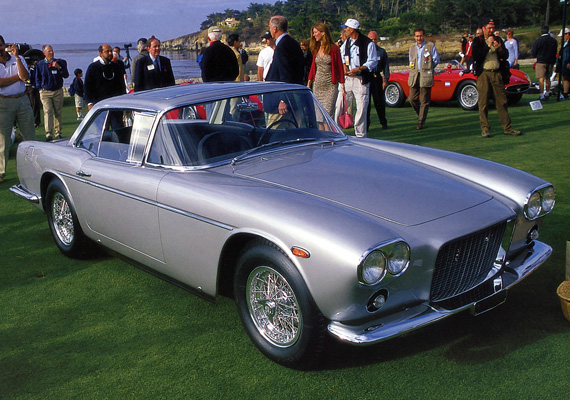
Looks familiar of course and is. Agnelli had PF realize this shape for both a Ferrari and the 5000 Maserati. The Maserati is the more successful effort.
Of course another reason is that the 5000 GT, as many know, was actually conceived by Royalty, His Highness the Shah of Iran. Whatever the Shah’s shortcomings, he knew his cars and the full story of his involvement with the creation of the 5000 GT is detailed perhaps for the first time, in Khawam’s book.
The list of first owners is impressive by any standards; Briggs Cunningham, Ferdinando Innocenti, Giovanni Agnelli, actor Stuart Granger, Mexican President Aldofo Mateos, Karim Aga Khan, and King Saud are just a few of the more recognizable names who ordered up the Orsi/Shah concoction. Interestingly, none were ordered as a Spyder, none had A/C as standard equipment, and none were right hand drive from new. Today, it’s hard to imagine a flat out luxury car without A/C but as owner Joop Stolze commented, “…classic cars however nice they may be, they never become a modern car. And that is the fun of it.”
Another interesting and unique part of Khawam’s Maserati 5000 GT is design commentary by Tom Tjaarda. The big Maser was clothed by eight different Italian coachbuilders at the top of their game. (With 22 of the 34 produced by Allemano.) With photos (the best in the book) by Dave Gooley, Tjaarda took a good look at each effort and gave his opinion on each, for better and worse. For example, the strange third grille that sits like a ‘cigar in an ashtray between the fender flanks’ of the first 5000GT didn’t work for Tjaarda anymore than that it did for us. But the Shah liked it and it was a way to reflect the snout of the 250F. Tjaarda likes the lines, particularly the front end treatment, of the Cunningham Michelotti but we didn’t. Tjaarda was at Ghia when his co-worker Sergio Sartorelli penned the dramatic lines of the single Ghia car and overall liked the lines. Tjaarda’s input and Gooley’s photos easily make this the best part of the book.
There is a significant chapter addressing the various versions and specs of each, from the carbureted cars to the series 2 fuel injectioned models with a full description of how the car was developed – rather quickly – from the 3500.
Doctor Adolfo Orsi, who was a young boy when the cars were conceived, provides interesting background in the Foreword, as does the late Doctor Giulio Alfieri, who recalled that the Tipo 107 V8 was an “…important son” to whom he owes his gratitude.
Perhaps Khawam spent too many pages reviewing the 450S as well as the later cars that were somehow ‘influenced’ by the 5000GT; they are relevant and interesting but not essential. Four color pages were devoted to the Costin Zagato 450S coupe (but while mentioning the name of the U.S. buyer who actually saved the car from the scrapheap, he gives no further details about Byron Staver). Khawan argues that “…the 5000 GT opened management’s eyes to a whole new market sector, without which Maserati would not have survived; as the 6-cylinder in-line cars were at the end of their technical development. The post-war industrial miracle elevated many buyers economically, which allowed them to indulge in V8-powered automobiles. Hence the details about those cars that used the Tipo 107 derived from the 5000 GT engine were introduced so that readers would realize why the 5000 GT was such a “Significant Automobile.””
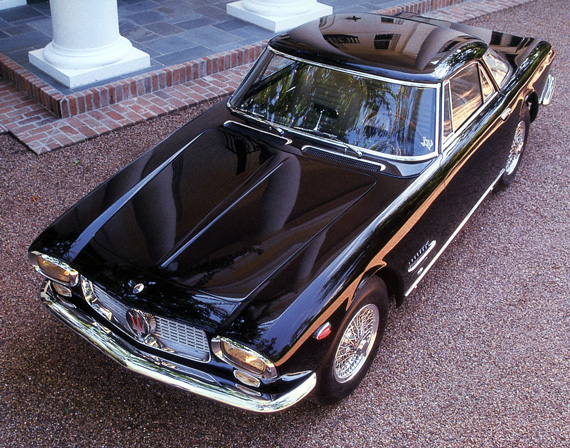
Overall, the Allemano might have been the most pleasing. Apparently Maserati thought so and had Allemano pound out 22 of the thirty four cars.
A full rundown of all the serial numbers is presented (but often lacking full histories of each serial number). Many of the mysteries surrounding the number and serial number of the 5000GT are solved and the author does a good job in accumulating data on many of the thirty four cars. However, this critical section is hard to follow, using notes (numbers) in the text to refer back to the serial number in question. We would have preferred the information to be listed in Serial Number order, with all owners, specs, details and photos under the appropriate chassis. But that’s us.
Nevertheless, this is a highly worthwhile book and if you’ve ever wanted to learn more about these top of the line Maseratis, it is indispensable, if pricey at $100 for each numbered edition. They can be purchased from the MAK Group, Publisher, 4132 Lomina Avenue, Lakewood, CA 90713. Telephone 562-429-7151 or email MAKGRP@aol.com.
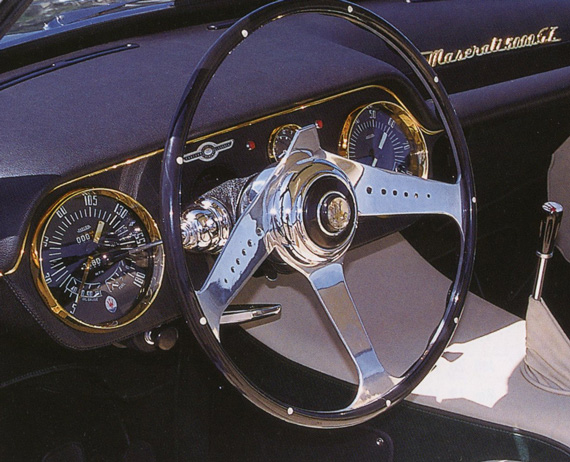
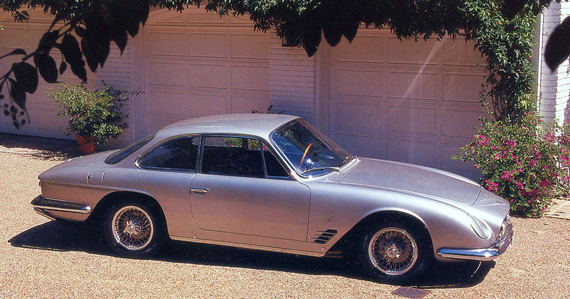
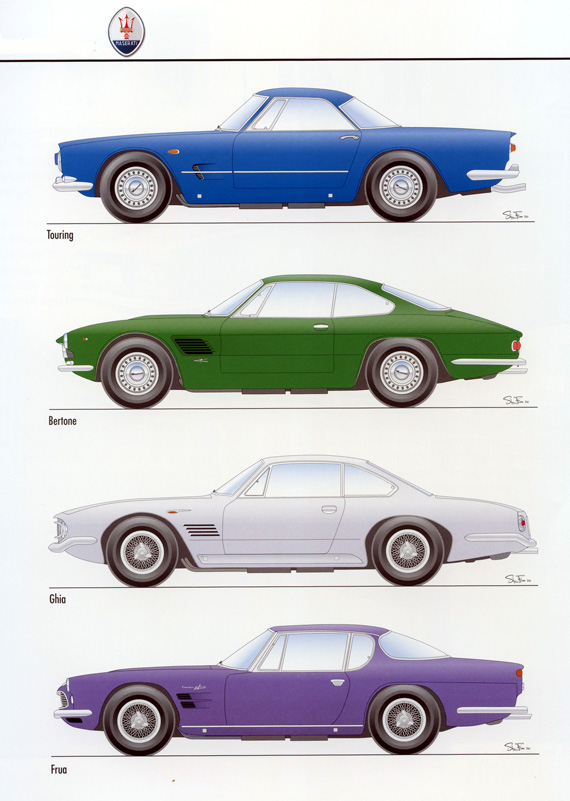
Yes, its still the only book that features this great cars.
I agree that the chapter about the 450S is much too long and so is the part that features the more modern cars.
Unfortunately Maurice did not research the individual history of all cars in full and so it can not be a serious source for investigation.
Hope that some day someone will pick up the torch and will present a proper book about the fastest cars of their time.
Walter,
The book is about the Maserati 5000 GT and its significance on Maserati as a manufacturer. It is not about searching who owned the cars after their first owners sold them. That has the least of importance to me but is certainly sought after by car brokers and re-sellers. My goal for publishing the book is much more noble than that.
The chapter on the 450S is detailed for multiple reasons:
1. The 450S was the fist V8 powered in the history of Maserati.
2. It essentially allowed Maserati to compete and win against its rivals, particularly Ferrari which put it on the same pedestal with the best.
3. It allowed Maserati and its customers to compete in US racing and attract the best drivers, e.g. Shelby. That gave Maserati prominence in the US for years after the factory withdrew from racing.
4. It is the race car that gave its engine to the 5000 GT. A formula very successfully exploited by Ferrari. In fact, Giulio Alfieri himself stated that “The 5000 GT was the most Ferrari like Maserati we ever produced.”
5. The 5000 GT lent its engine back to other Maserati race cars; the Tipo 151 and Tipo 65, both competed in top flight racing e.g. Le Mans.
Hence the section on the 450S is full of pertinent details for genuine racing car enthusiasts that are interested in learning about the lineage of the cars.
6. More importantly and as mentioned in the review, the introduction of the 5000 GT has had a profound effect on Maserati’s product line afterwards. The fact that management switched the majority of their production to V8 powered cars using engines derived from that of the 5000 GT/450S is the undeniable testimonial that the 5000 GT was a “Significant Automobile” in the history of this prestigious marque.
Readers that were not familiar with those subsequent models got to learn about their pedigree. That to me is much more interesting than listing the ownership history of the cars after they were sold by their first owners.
Regards,
Maurice Khawam
MAK Group, Publisher
Maurice,
OK, your opinion.
But every engineer will tell you upon a closer look to the 5000GT-engines (with injection) that this motor had not much in common with the 450S-engine (despite the first 2-cars, of course!).
Well, my understanding is that all of this 32 “significant” cars should deserve a better individual research…!
And: are you sure that those people who bought the book are so interested in such a huge part about the modern Maserati GTs?
Best Wishes
Walter Baumer
http://www.InternationalMaseratiResearch.com
Walter,
The blocks were all the same for all the 5000 GT produced; the difference was in the head design and fuel delivery. These blocks were sitting at the factory and were all cast from the same mold. I did very thorough research on the subject and consulted with Ermanno Cozza at Maserati. The engines were cast specifically for the 450S as there was no plan for using them in road cars.
The book covers all the cars produced without delving in their individual history as some were very obscure having fallen in the hands of owners that did not appreciate them and were relegated to rot for years in despicable places before getting rescued.
Oh, yes many people that bought the book were thrilled to read the section about the road cars that were inspired by and partly derived from the 5000GT.
The book sales statistics are a clear testimonial that readers do greatly appreciate the research and information in it. Even after 10 years after its release, the book continues to sell very well.
I suggest you read your copy again to gain an appreciation of its content and the work that went into preparing it. The pictures only give you a glimpse of the information.
Thanks,
Maurice Khawam
“The 450S was the fist V8 powered in the history of Maserati”
Not quite!
This was surely the V8RI of 1935?
Dick Ploeg
Dear Walter Baumer,
I think Mr. Khawam has written an excellent book. Your immense ego is well known in the Maserati world Walter and you think it is your right to criticise Mr. Khawam with some small details. I suggest you’ll write a book yourself if you know so well what people want to read on such a subject.
Regards,
Gerardo